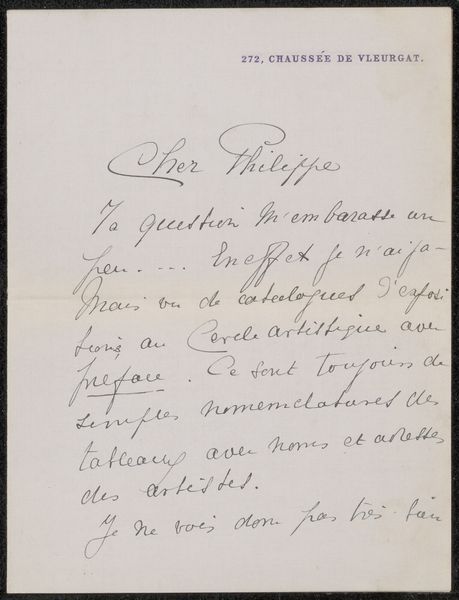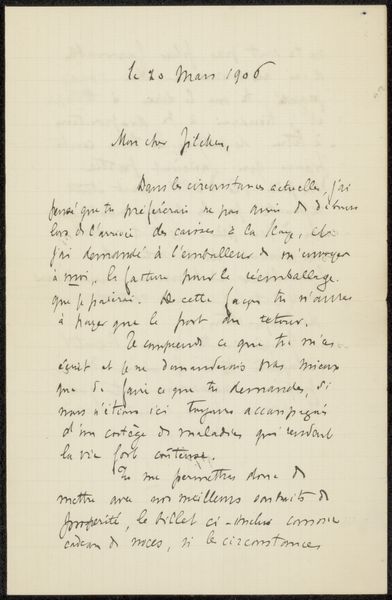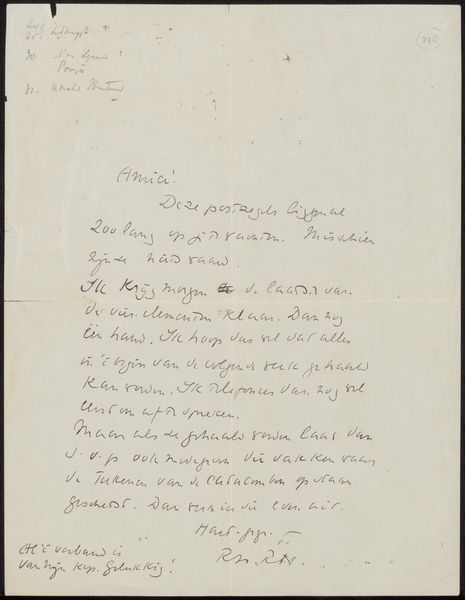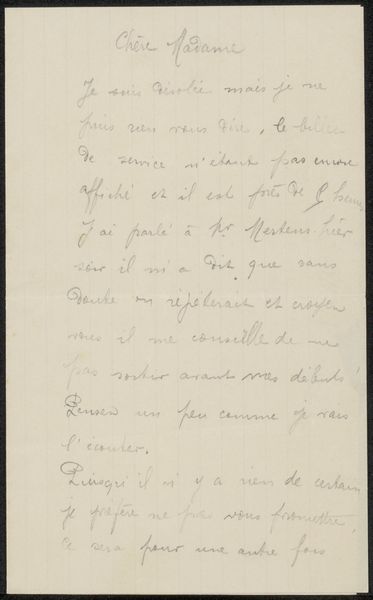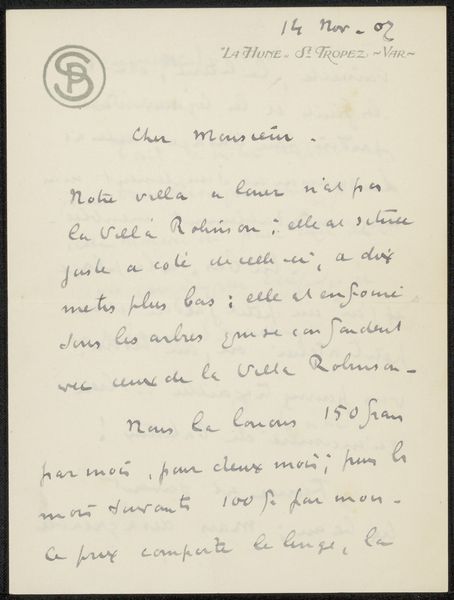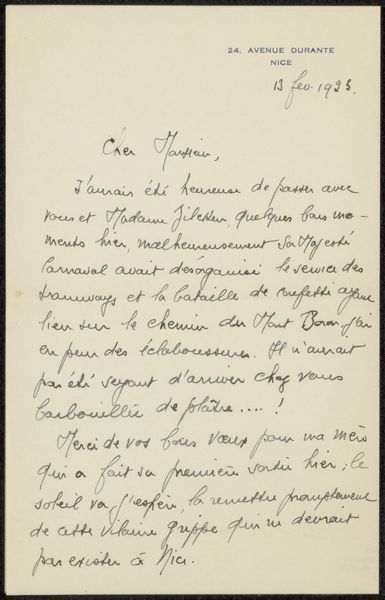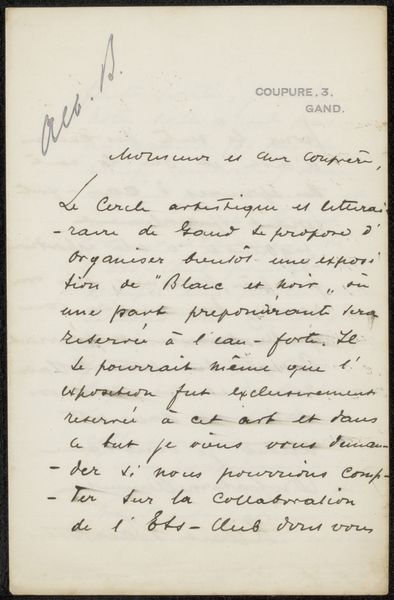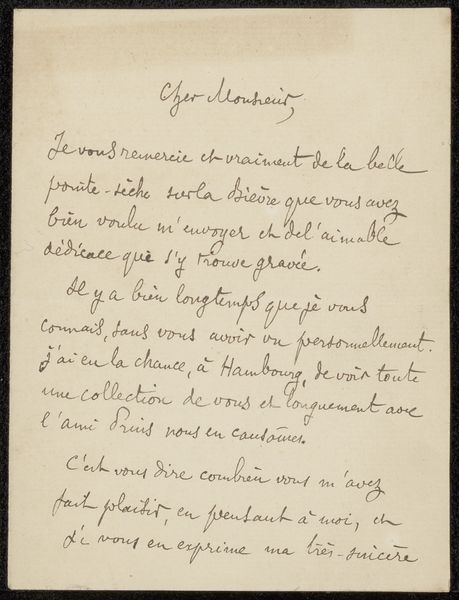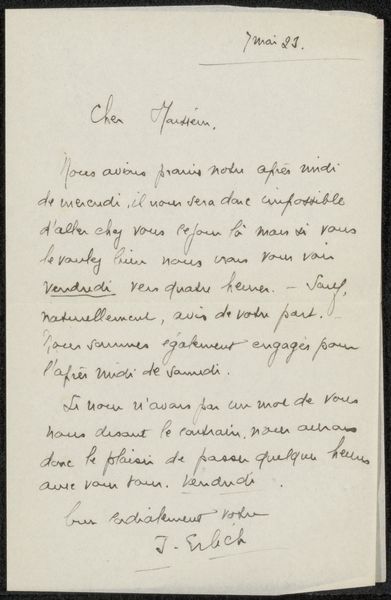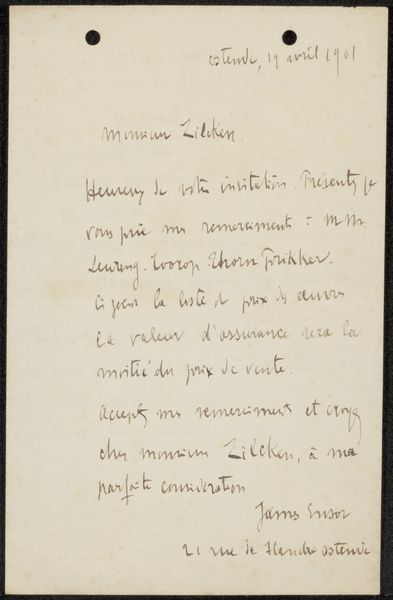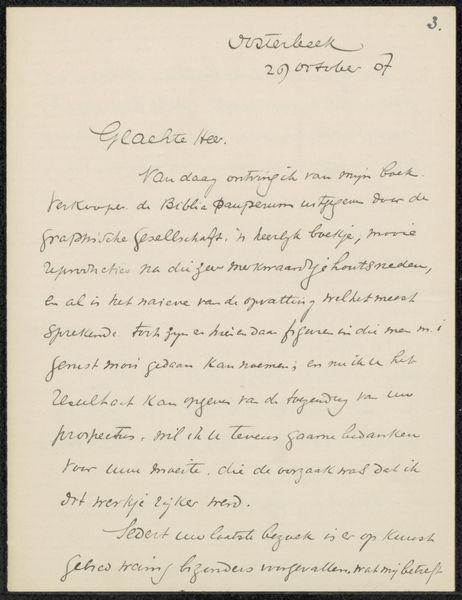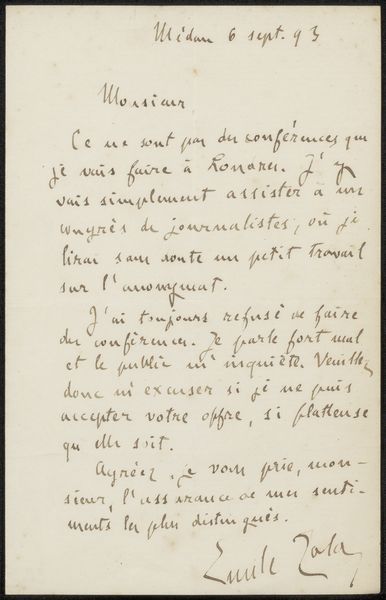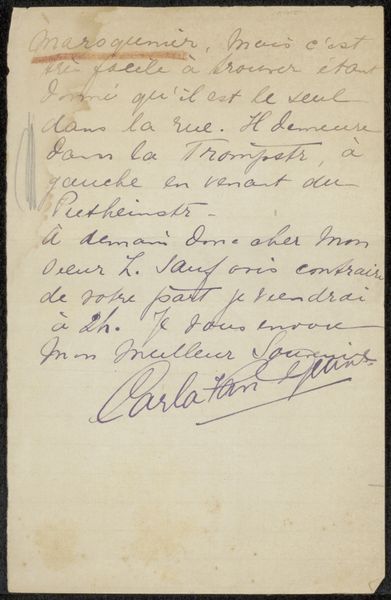
#
script typography
#
hand-lettering
#
hand drawn type
#
hand lettering
#
hand-drawn typeface
#
fading type
#
calligraphic
#
thick font
#
handwritten font
#
small lettering
Copyright: Rijks Museum: Open Domain
Editor: Here we have Sir Francis Seymour Haden's "Brief aan Philip Zilcken," possibly from 1890, housed at the Rijksmuseum. It’s quite simple – a handwritten letter, I presume. I’m struck by the fading ink and elegant script. It feels intimate, almost like intruding on a private correspondence. What historical context gives this piece significance? Curator: That sense of intimacy is key. Consider the rise of personal correspondence as a powerful tool of influence and networking within artistic circles in the late 19th century. Letters weren’t just practical; they performed a crucial public role in shaping artistic reputations and solidifying social positions. The handwriting itself becomes a performance, carefully crafted to convey personality and status. Do you think the language it is written in matters? Editor: Absolutely, the fact that it's in French seems deliberate. Perhaps it aimed at reaching a more continental and cultured group of peers and collaborators. Does it mean something more specific to this letter though? Curator: It does, given Philip Zilcken was a Dutch artist and critic, who was actively involved in promoting contemporary art, understanding that he was also a leading member of artistic circles in Paris reveals that this wasn’t just personal. It subtly claims membership in an elite, transnational artistic community. Think of it as a form of cultural capital being displayed. Haden wasn't just writing a letter; he was performing his identity. How might this relate to his artistic practice as an etcher? Editor: I guess just as the etching needs an eye for detail, so does this letter, which in its style speaks volumes about the writer’s persona. The audience wasn't just Zilcken, it was anyone who might later see and interpret this piece of correspondence. Curator: Precisely! By considering such forms of private communication as means of social performance, we can begin to reveal the multi-layered socio-cultural networks that shape our reading of art history. This exercise definitely helped reveal some deeper appreciation of it all for me, actually! Editor: Definitely. Thinking about letters as performance and how Haden positions himself within the art world gave me a totally new understanding of his piece, it felt extremely enlightening!
Comments
No comments
Be the first to comment and join the conversation on the ultimate creative platform.
